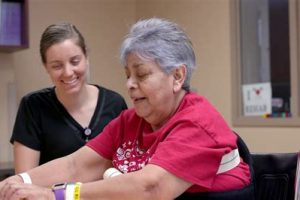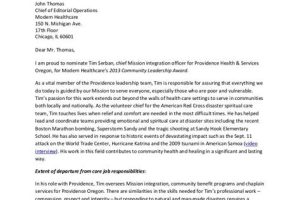Table of Contents
Discover the essential dress code guidelines for hospital volunteers. Find out what attire is appropriate and how to maintain a professional appearance while lending a helping hand at the hospital. Follow these recommendations to ensure a positive and respectful experience as a volunteer.
When it comes to volunteering at a hospital, there is one aspect that often goes unnoticed but plays a crucial role in maintaining professionalism and safety: the dress code. Whether you are a seasoned volunteer or someone considering giving their time and energy to support patients and staff, understanding and adhering to the dress code is essential. Not only does it help create a positive impression, but it also ensures a hygienic environment for everyone involved. So, let’s delve into the world of hospital volunteer dress codes and uncover the guidelines that make a difference.
The Importance of Dress Code for Hospital Volunteers
In any professional setting, including hospitals, dress code plays an essential role in creating a sense of unity and professionalism among employees. Volunteers, who contribute their time and efforts to support the hospital staff and patients, should also adhere to a specific dress code. This article will discuss the significance of dress code for hospital volunteers and provide guidelines on appropriate attire. By following these guidelines, hospital volunteers can contribute to a positive and efficient work environment.
Creating a Professional Atmosphere
When patients and their families enter a hospital, they expect to encounter a professional environment. By adhering to a dress code, hospital volunteers contribute to this atmosphere of professionalism. A well-defined dress code ensures that volunteers are easily identifiable, fostering trust and confidence in the services they provide. It also helps visitors distinguish between volunteers and hospital staff, avoiding any confusion.
Uniforms for Volunteers
One way to establish a consistent and professional appearance among hospital volunteers is through uniforms. Hospitals often provide volunteers with specific attire to wear during their shifts. These uniforms typically include a shirt or blouse with the hospital logo, along with appropriate pants or skirts. By wearing these designated uniforms, volunteers can easily be identified by patients, staff, and visitors, which enhances the overall professionalism of the hospital.
Maintaining Cleanliness and Hygiene
In a healthcare setting, cleanliness and hygiene are of utmost importance. Hospital volunteers must ensure that their attire is clean and well-maintained at all times. This includes regularly washing and ironing their uniforms, as well as wearing appropriate undergarments and closed-toe shoes. By paying attention to personal hygiene and cleanliness, volunteers contribute to a safe and healthy environment for patients and staff.
Comfortable Attire
While maintaining professionalism and adhering to a dress code, it is also crucial for hospital volunteers to prioritize comfort. Volunteering in a hospital often involves long hours of standing or moving around, so volunteers should wear comfortable and practical clothing. Avoiding restrictive or tight-fitting outfits ensures that volunteers can perform their duties efficiently and without discomfort.
Avoiding Revealing or Offensive Clothing
Hospital volunteers should always remember that they are representing the institution and the values it upholds. It is essential to avoid wearing revealing or offensive clothing that could compromise the professionalism and respectability of the hospital. Clothing with offensive language, controversial symbols, or excessive amounts of skin exposure should be avoided at all costs.
Infection Control Measures
Hospitals are places where infection control is crucial. Hospital volunteers must follow infection control measures, which may include wearing additional protective clothing such as gloves, masks, or gowns. These measures ensure the safety and well-being of both volunteers and patients. Volunteers should always comply with the hospital’s policies and guidelines regarding infection control.
Personal Grooming
Personal grooming is an essential aspect of adhering to a dress code. Hospital volunteers should maintain a clean and neat appearance by practicing good personal hygiene. This includes having well-groomed hair, trimmed nails, and minimal use of strong fragrances. By paying attention to personal grooming, volunteers present themselves in a professional manner and contribute to a positive work environment.
Wearing Identification Badges
Identification badges are crucial for hospital volunteers as they ensure easy identification and help maintain security within the premises. Volunteers should always wear their identification badges prominently, ensuring they are visible to staff, patients, and visitors. This practice helps establish trust and credibility, making it easier for others to approach and seek assistance from volunteers.
Importance of Modesty
Modesty is a key aspect of dressing appropriately as a hospital volunteer. While comfort is important, it is essential to avoid overly casual or revealing clothing. Volunteers should be mindful of the sensitivity of the healthcare environment and dress modestly, respecting cultural and religious beliefs. By adopting modest attire, volunteers demonstrate respect for patients and their diverse backgrounds.
Conclusion
A dress code for hospital volunteers is not only about appearance but also about professionalism, safety, and respect. By following the guidelines outlined in this article, hospital volunteers can create a positive and efficient work environment while providing essential support to patients and staff. Adhering to a dress code ensures that volunteers are easily recognizable, maintain cleanliness and hygiene, and contribute to the overall professionalism and trustworthiness of the hospital.
The Importance of a Dress Code for Hospital Volunteers
In order to maintain a professional and organized environment, hospitals require their volunteers to adhere to a specific dress code. This dress code aims to ensure the safety and hygiene of both the volunteers and patients. By dressing appropriately, volunteers demonstrate their dedication to the hospital’s mission and contribute to a positive patient experience.
Clean and Neat Attire – A Basic Requirement
One of the fundamental aspects of the dress code for hospital volunteers is the obligation to wear clean and neatly pressed clothes. This choice of attire conveys a sense of professionalism and demonstrates respect for patients and their families. It is essential that volunteers present themselves in a manner that reflects a high standard of cleanliness and hygiene.
Comfortable and Appropriate Footwear for Long Shifts
Given the physically demanding nature of volunteering in a hospital, appropriate footwear is of utmost importance. Volunteers are expected to wear closed-toe shoes with non-slip soles that provide ample support and comfort throughout their shifts. These shoes help minimize the risk of injuries, particularly in areas prone to spills and accidents.
Identification Badges – Displaying Professionalism
Hospital volunteers are typically required to wear identification badges prominently at all times. Aside from contributing to a sense of professionalism, badges help patients, staff, and visitors easily identify volunteers and seek assistance when needed. The badges are a crucial part of the dress code as they facilitate efficient communication and enhance patient safety within the hospital.
Jewelry and Accessories – Keep It Minimal
To ensure both personal safety and patient comfort, hospital volunteers are generally advised to minimize the use of jewelry and accessories. Small stud earrings, a wristwatch, and plain wedding bands are generally considered acceptable. By reducing the risk of jewelry getting caught in medical equipment or transmitting infections, volunteers contribute to a safer healthcare environment.
Hair and Personal Grooming Guidelines
Maintaining personal hygiene and neatness is essential for hospital volunteers. Hair should be clean, well-groomed, and secured away from the face to minimize the risk of spreading infections. Volunteers with long hair may be required to tie it back or wear a hairnet. Basic personal grooming, such as regular handwashing and the absence of strong fragrances, is also emphasized.
Dress Code Exceptions for Specialized Roles
Certain specialized volunteer roles in hospitals may have specific dress code requirements. For example, volunteers assisting in surgical or sterile environments may need to wear additional protective clothing, such as scrubs and gloves. These exceptions exist to ensure the safety and well-being of both volunteers and patients in these unique settings.
Dress Code Enforcement and Implications
Strict adherence to the dress code policy for hospital volunteers is crucial to maintaining a professional and safe environment, and violations may have consequences. Volunteers who consistently fail to comply with the dress code may be subject to reassignment or dismissal. By understanding and embracing the importance of the dress code, volunteers contribute to a unified and respectful hospital environment that prioritizes patient care.
Point of View: Dress Code for Hospital Volunteers
As a journalist, it is imperative to examine the dress code policies implemented for hospital volunteers. These guidelines play a crucial role in maintaining professionalism and ensuring the well-being of both volunteers and patients. By understanding the importance of appropriate attire, hospitals can create an environment that reflects their commitment to quality care and instills confidence in those seeking medical assistance.
To address this topic effectively, let us explore the key points regarding dress code policies for hospital volunteers:
- Uniformity and Identification: Hospitals often require volunteers to wear uniforms or specific clothing items that help establish their presence and distinguish them from other staff members. This practice ensures that volunteers are easily identifiable, allowing patients to seek help when needed. Uniforms may include branded polo shirts, lab coats, or scrubs that reflect the hospital’s color scheme, creating a cohesive look throughout the facility.
- Comfort and Practicality: While maintaining a professional appearance is crucial, hospitals must also prioritize the comfort and practicality of volunteer attire. Since volunteers engage in various tasks, such as guiding patients or assisting medical personnel, their clothing should facilitate movement and allow them to perform their duties efficiently. Breathable fabrics, appropriate footwear, and pockets for carrying essential items are all factors to consider when defining the dress code for hospital volunteers.
- Hygiene and Infection Control: Hospitals are inherently susceptible to infectious diseases, making proper hygiene and infection control measures paramount. Volunteers must adhere to strict cleanliness standards, which may include covering hair, removing jewelry, and maintaining clean hands. Additionally, hospitals often require volunteers to wear disposable gloves or face masks when handling patients or entering sterile environments, further safeguarding against potential infections.
- Professionalism and Ethical Considerations: Dress code policies for hospital volunteers also serve to promote professionalism and ethical behavior. By adhering to a set standard of appearance, volunteers demonstrate their commitment to the hospital’s mission and values. This not only reassures patients and their families but also fosters a sense of trust and respect within the medical community. Dress code guidelines can also address issues such as appropriate language, personal grooming, and maintaining confidentiality, reinforcing the importance of these ethical considerations.
- Flexibility and Individual Expression: While maintaining a standardized dress code is essential, hospitals should also recognize the need for flexibility and individual expression among their volunteers. Allowing volunteers to choose from a selection of approved attire or providing options for different occasions can help accommodate personal preferences while still upholding a professional image. This approach ensures that volunteers feel comfortable and confident in their role, contributing positively to the overall hospital environment.
In conclusion, the dress code policies for hospital volunteers serve as a critical component in ensuring a professional, hygienic, and ethical atmosphere within healthcare institutions. By considering factors such as uniformity, comfort, hygiene, professionalism, and flexibility, hospitals can establish guidelines that enhance the volunteer experience and inspire confidence in patients and staff alike. These policies reflect the commitment to providing quality care and contribute to the overall success of the hospital’s mission.
Thank you for taking the time to visit our blog and learn more about the importance of dress code for hospital volunteers. As a journalist, it is crucial to address topics that may seem mundane but hold significant value in certain contexts. Dress code guidelines might not be the most riveting subject, but when it comes to volunteering in a hospital setting, adhering to appropriate attire is essential for several reasons.
First and foremost, dressing professionally as a hospital volunteer helps to establish a sense of trust and credibility among patients, staff, and visitors. When individuals see volunteers donning appropriate attire, such as clean and neat clothing, it creates a positive impression and fosters a sense of professionalism within the healthcare environment. Patients often feel more at ease when they see volunteers who are well-dressed and take their roles seriously. In addition, a professional appearance can help volunteers gain the respect and cooperation of hospital staff, as they are seen as part of the larger healthcare team.
Moreover, following a dress code ensures the safety and hygiene of both volunteers and those they interact with. Hospitals are sensitive environments where infection control is of utmost importance. By adhering to specific dress code guidelines, volunteers can minimize the risk of spreading harmful germs or bacteria. For instance, wearing closed-toe shoes and avoiding excessive jewelry can prevent accidents and minimize the chances of contamination. Furthermore, maintaining a clean and presentable appearance shows respect for the patients’ vulnerability and contributes to maintaining a sterile environment within the hospital.
In conclusion, while it may seem trivial, adhering to a dress code as a hospital volunteer plays a vital role in establishing professionalism, gaining trust, and ensuring the safety and well-being of all individuals within the healthcare setting. By dressing appropriately, volunteers contribute to creating a positive and comfortable atmosphere for patients, staff, and visitors alike. So, next time you step into a hospital as a volunteer, remember the impact your attire can have and dress to make a difference.
.
People also ask about Dress Code For Hospital Volunteers:
What is the appropriate dress code for hospital volunteers?
As a hospital volunteer, it is essential to adhere to a professional and modest dress code. Generally, hospitals have specific guidelines regarding attire to ensure a clean and hygienic environment. Volunteers are typically required to wear clean, neat, and conservative clothing.
Are there any restrictions on what volunteers can wear?
Yes, there may be certain restrictions on what volunteers can wear in a hospital setting. It is important to avoid clothing that is revealing, provocative, or too casual. Clothing with offensive language or graphics should also be avoided to maintain a respectful and appropriate atmosphere.
Should volunteers wear uniforms?
While some hospitals provide uniforms for their volunteers, others may not. In such cases, volunteers are usually expected to dress in business casual attire. This typically includes dress pants or skirts, collared shirts or blouses, closed-toe shoes, and minimal jewelry. It is always best to check with the hospital’s volunteer coordinator or supervisor for specific dress code requirements.
Are there any specific color requirements for volunteer attire?
Color requirements for volunteer attire vary among hospitals. Some hospitals may request volunteers to wear specific colors, such as white, to match the staff or to indicate their role within the facility. However, many hospitals allow volunteers to wear any professional-looking color, as long as it adheres to the overall dress code guidelines.
Can volunteers wear scrubs?
In some hospitals, volunteers may be allowed to wear scrubs if they are assigned to specific departments or tasks that require them. However, it is crucial to confirm with the hospital’s volunteer department whether wearing scrubs is permitted or if there are any specific guidelines regarding their use.






